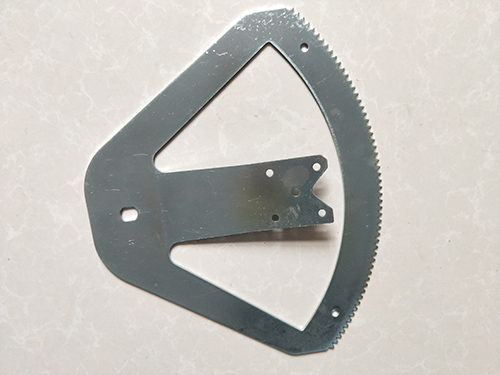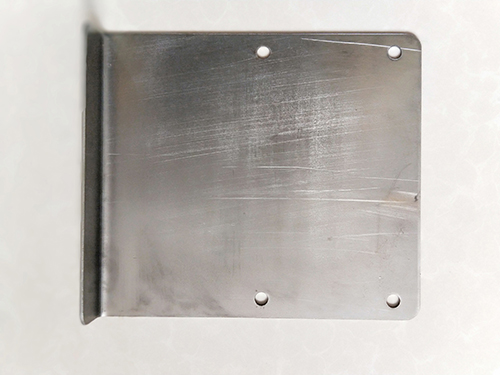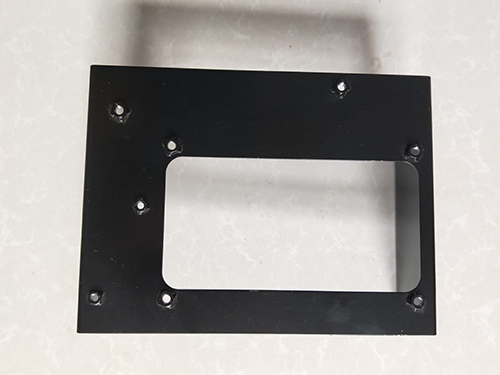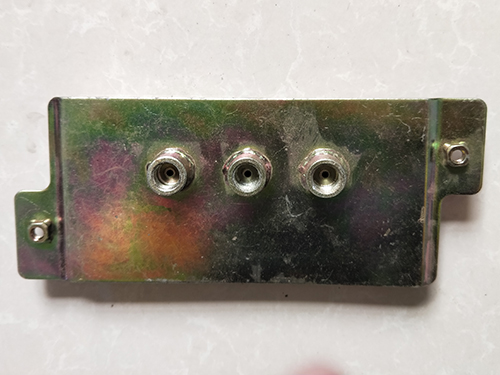Causes and preventive measures of deep drawing cracks and rupture defects in sta
The main cause of cracks or ruptures is due to the tensile stress on local burrs exceeding the strength of the sheet metal. There are many reasons for the cracking of stamped parts, and in the process of solving it, the cracking area should be carefully inspected. Based on the specific situation, the cause of the fracture should be inferred, and a specific plan to solve the fracture problem should be formulated to prevent the stamping part from cracking.
1. Causes of deep drawing cracks and rupture defects
(1) The stamping performance of the material does not meet the process requirements. Different materials of sheet metal have different elongation and tensile strength. When the selected sheet metal does not meet the deep drawing requirements, the sheet metal will be torn during the stamping process. (2) The thickness of the sheet metal exceeds the tolerance. The thickness of the sheet metal exceeds the tolerance, and the gap between the sheet metal becomes smaller during the deep drawing process. The compressive stress on the sheet metal increases, making it difficult to form deep drawing. The sheet metal is not easy to flow and may be pulled apart. (3) The surface quality of the sheet metal is poor, with scratches, rust, and impurities. Scratches on the surface of the sheet metal can easily cause stress concentration during the deep drawing process, while surface rust and impurities will increase the resistance of the sheet metal forming process. (4) The feeding resistance on the pressing surface is too high. The rough appearance, small gap between the pressing ribs, small radius of the concave die corner, high drawing ribs, and poor surface smoothness of the pressing and drawing ribs can all lead to increased flow resistance of the sheet metal, resulting in cracking. (5) The positioning of the sheet metal is incorrect. During the production process, the position of the sheet metal is offset, resulting in excessive and insufficient pressing on one side. The excessive pressing on the other side leads to high stress and difficulty in feeding, resulting in cracking. (6) Improper installation of the mold or poor accuracy of the press machine can result in uneven edge pressing force, excessive local edge pressing force, and lead to sheet metal cracking. (7) Not applying lubricant according to the process requirements. (8) The local deep drawing amount is too large, and the deep drawing deformation exceeds the sheet metal deformation.
2. Preventive measures for cracks and rupture defects in stamped parts
(1) Select appropriate sheet metal during the design phase to achieve the required deep drawing performance. (2) During the production process, inspect the surface quality of the sheet metal for rust and impurities. (3) Regularly inspect and maintain the mold, polish the surface of the mold to make it rough. (4) Standardize the production process and strictly adhere to the oil coating requirements. (5) Regularly inspect and maintain the accuracy of stamping equipment.
Causes and preventive measures of deep drawing wrinkles defects
1. Causes of Wrinkle Defects in Deep Drawing
The main causes of wrinkles are instability caused by local hair damage and uneven material flow, which leads to local material accumulation and wrinkles. There are several main reasons for this.
(1) The precision of the stamping equipment is insufficient, and the mold tilts on the equipment, resulting in uneven stress on the surrounding area of the pressing surface, and wrinkles are prone to occur in areas with low stress. (2) Stamping parts have poor formability and processability, complex stamping direction and pressing surface shape, making it difficult for the flow velocity of the sheet metal to cause wrinkles. (3) Excessive application of lubricating oil reduces feed resistance. (4) Poor contact on the pressing surface leads to rapid material flow in certain areas, resulting in wrinkles. (5) The feeding resistance on the pressing surface is too low, and excessive feeding leads to wrinkles. (6) The corner radius of the concave mold is too large, and the feeding resistance is reduced. (7) The corner of the drawstring is too large, the height is not enough, and there are few drawstrings.
2. Preventive measures for deep drawing wrinkles defects
(1) Craftsmanship and rationality of stamping parts and mold design; Reasonably choose the stamping direction and the shape of the pressing surface. (2) Reasonably design processes to supplement concave and convex grooves and absorb excess materials. (3) Regularly inspect and maintain the mold, ensuring even gaps in the pressing surface area. (4) Standardize the production process and strictly adhere to the oil coating requirements. (5) Regularly inspect and maintain the accuracy of stamping equipment. (6) Determine the number, position, and height of the stretching ribs based on the mold debugging situation. (7) Determine a reasonable fillet radius for the concave mold based on theoretical calculations and mold debugging.
The high or low scrap rate of stamped parts directly affects the profit margin of stamped parts. When too much stamping waste is generated, it not only increases costs but also affects the life of the mold and the production period of the product. In fact, the reasons for the high scrap rate of stamped parts are not complicated. Below are several reasons for the generation of stamping waste and solutions:
1、 Reason for occurrence:
1. The quality of the purchased steel does not meet the national standard, such as unstable material, size deviation, and surface accuracy not meeting the standard, etc;
2. Stamping molds are not installed and used correctly;
3. Stamping workers did not strictly install positioning devices for feeding during the operation process;
4. After prolonged use, the gap between the molds increases or the mold components wear out, resulting in the production of scrap products;
5. Due to the enormous impact force that the mold needs to withstand during the stamping process, bolts or other accessories become loose, which affects the normal production of the entire mold;
6. The stamping workers did not produce according to the operation manual formulated by the company.
2、 Solution:
1. When purchasing raw materials, stamping factories strictly adhere to installation standards for selection. If the factory conditions permit, the composition, surface roughness, and size of the steel should be tested. Qualified raw materials are a prerequisite for the quality of stamped parts. When purchasing raw materials, it is advisable to choose reputable steel distributors or products from large steel mills;
2. After designing the stamping process, stamping workers strictly follow the process regulations during operation. Each stamping product has a different stamping process, which requires managers to develop process regulations for that product before processing it;
3. The punching machines and stamping molds used in the factory are always in a stable operating state, and regular maintenance and inspection of the punching machines and stamping molds are required;
4. The established quality inspection regulations require complete testing of the first batch of products before formal production, and regular sampling testing during the production process;
5. Suitable tools should be used for feeding and picking up to avoid scratching the product;
6. During stamping, attention should be paid to keeping the mold clean, and the workpieces and raw materials in the workshop should be arranged in an orderly manner.
Metal stamping parts; The reasons and solutions for surface scratches are as follows:
1. When continuous bending is carried out on soft materials such as copper and aluminum alloys, metal particles or slag are prone to adhere to the surface of the working part, causing significant scratches on the workpiece. At this time, careful analysis and research should be conducted on the shape and lubricating oil of the working part to prevent particles and slag from appearing on the blank, which may result in scratches.
2. When the bending direction of metal stamping is parallel to the rolling direction of the material, cracks will appear on the surface of the workpiece, resulting in a decrease in the surface quality of the workpiece. When performing metal stamping bending on two or more parts, the bending direction of the metal stamping should be at an angle as close as possible to the rolling direction.
3. When the burr surface is used as the outer surface for metal stamping and bending, the workpiece is prone to cracking and scratching; Therefore, when metal stamping and bending, the burr surface should be used as the inner surface of the metal stamping and bending.
4. The radius of the concave die corner is too small, and there are impact marks on the bent part of the metal stamping. Polishing the concave die and increasing the fillet radius of the concave die can prevent scratches on metal stamping bent parts.
5. The gap between the convex and concave molds should not be too small, as a small gap can cause thinning and scratching. During the stamping process, it is necessary to constantly check the changes in the clearance of the mold.
6. When the convex mold enters the concave mold too much, it will cause scratches on the surface of the parts. Therefore, without being affected by rebound, the amount of convex mold entering the concave mold should be appropriately reduced.
7. In order to meet the accuracy requirements of the parts, metal stamping and bending dies are often used for bottom pressing. Therefore, during the metal stamping and bending process, the springs, positioning pin holes, support plates, and return holes on the pressing plate will be pressed into indentations, so adjustments should be made.







